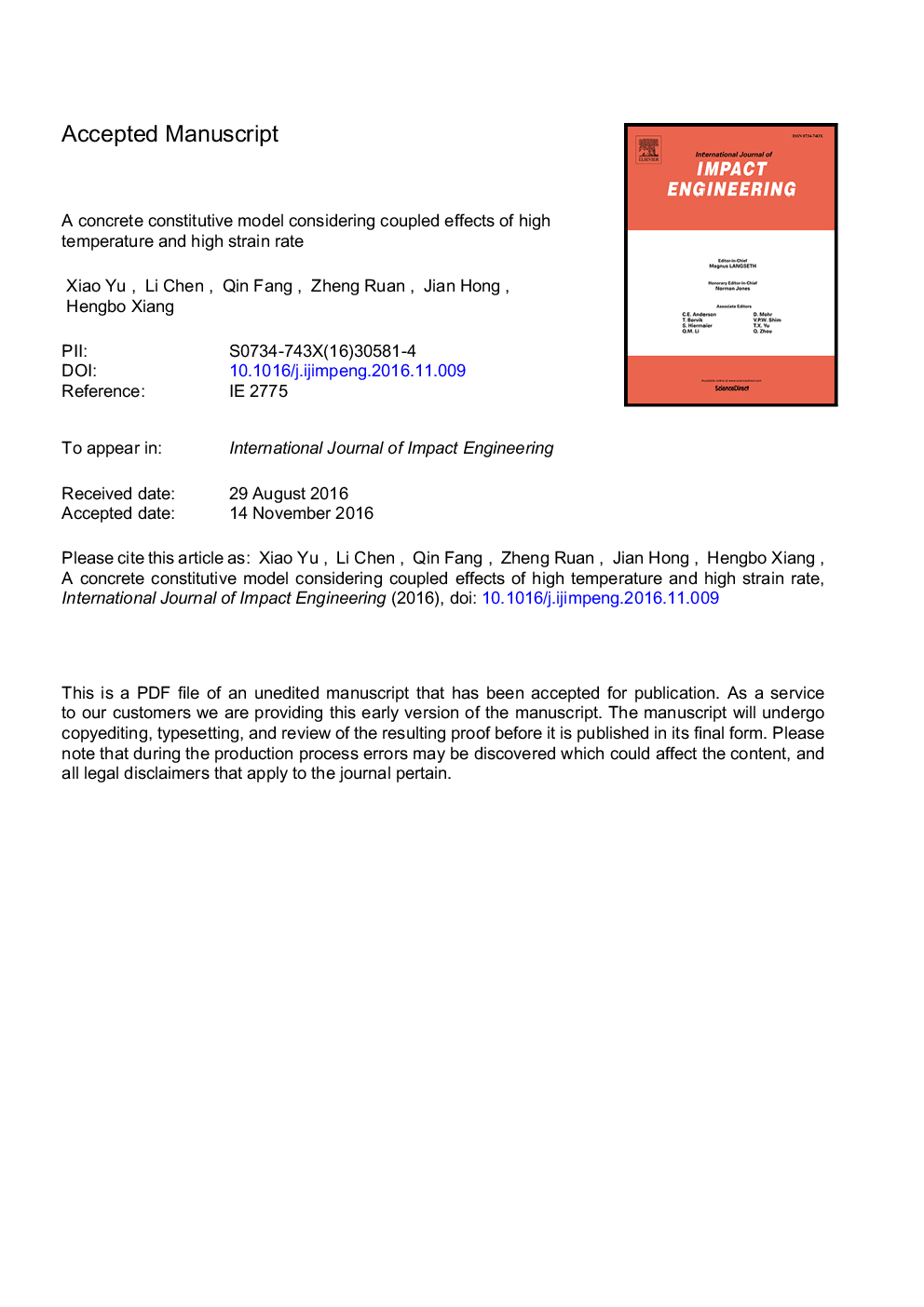| Article ID | Journal | Published Year | Pages | File Type |
|---|---|---|---|---|
| 5015600 | International Journal of Impact Engineering | 2017 | 30 Pages |
Abstract
Concrete in RC structures is possibly exposed to fire and blast due to occasional accidents or attacks during the service life. To predict the dynamic responses of RC structures under fire and blast precisely, the Drucker-Prager (DP) constitutive model was modified to consider the coupled effects of high temperature and high strain rate for concrete. The piecewise function for the complete stress-strain curve of concrete at the ambient temperature was extended for damage and high temperatures. The yield criterion with the exponent form and the associated flow rule were employed into the model to describe the plastic behaviors of concrete at high temperature. A new coupling function was proposed to determine the coupled effects of high temperature and high strain rate on concrete strength on base of the test data. The proposed model was implemented into the commercial FE software ABAQUS through VUMAT. A fine numerical analysis on the existing SHPB test at high temperature was conducted to validate the proposed model, and a good agreement with the test data was observed.
Related Topics
Physical Sciences and Engineering
Engineering
Mechanical Engineering
Authors
Yu Xiao, Chen Li, Fang Qin, Ruan Zheng, Hong Jian, Xiang Hengbo,
